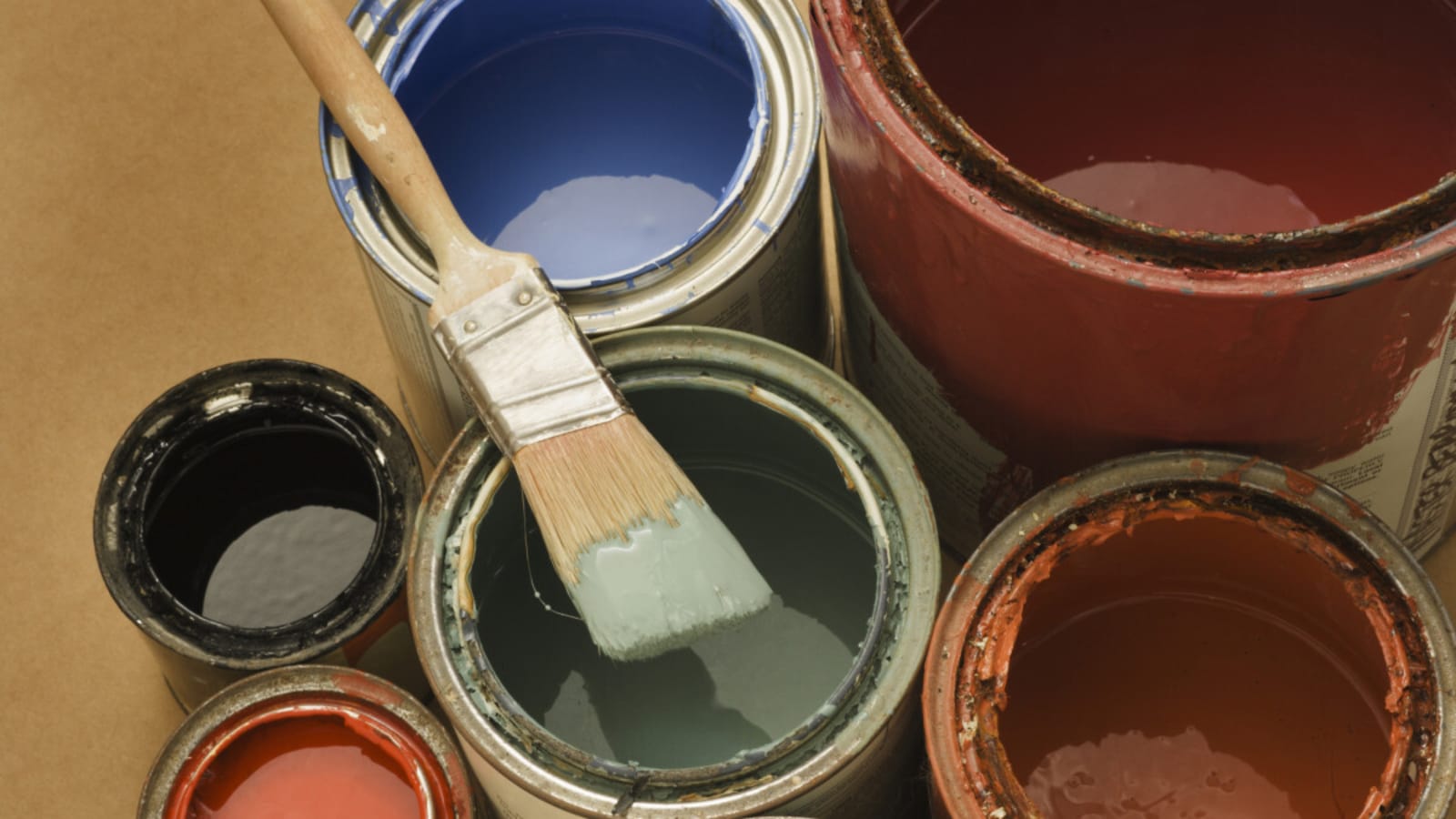
So, you’ve finished your painting project, but there’s still paint left over. Tossing it out feels wasteful, but storing it improperly can lead to a dried-out, unusable mess—or even a safety hazard. Whether you're saving paint for touch-ups or future DIYs, learning the right way to store your open paint cans is key to keeping them fresh and safe. And yes, safety matters: improper storage or disposal of paint can lead to spills, fumes, or even fires in rare cases.
What happens once a paint can is opened?
- Air Exposure: Liquid paint begins to oxidize, which can thicken or harden the paint over time.
- Increased Risk of Contamination: Dust, debris, or even a stray bug can find its way in, especially if the lid isn’t sealed tightly.
- Rust Formation: If moisture gets into the rim of the can, the lid and edges can rust, affecting the paint's quality.
- Spills and Leaks: Without proper sealing, a partially used can is much more likely to spill or leak if tipped.
How to Properly Store Open Paint Cans
- Seal the Lid Completely: Tap the lid back into place with a rubber mallet (never a metal hammer, which can dent the lid) for a tight seal. Adding a layer of plastic wrap under the lid before sealing is an excellent option for easy added protection.
- Label the Can: Write down the color, room it was used in, and the date you stored it. A permanent marker works wonders here. You can also ask for extra labels of the paint color when the store is printing the formula label.
- Store Upright and Off the Ground: Place the can upright on a shelf or pallet to protect it from moisture and spills. Never store it on bare concrete floors, which can be damp.
- Choose a Climate-Controlled Area: A basement, utility closet, or indoor storage room is best. Avoid spaces that extreme temperature (cold weather or heat) like garages or sheds and prevent direct sunlight exposure.
- Transfer to Smaller Storage Containers: For small amounts of leftover paint, pour is out of the original container into an clean glass jar or plastic container. An airtight container should keep your usable paint from drying out.
How long can properly stored paint last?
When stored correctly, most latex or acrylic paints can last up to 10 years, while oil-based paints might remain usable for 15 years or more. However, always check for signs of spoilage, like a sour egg smell, lumpy texture, or separation that can’t be stirred back together with a paint stick. If in doubt, test a small patch before committing to a project.
Should you store paint in the fridge?
No, never! While the fridge might seem like a controlled environment, it’s a bad idea for left-over paint. Paint contains chemicals that don’t mix well with food items, and the cold can cause some paints to thicken or separate. Instead, stick surplus paint in dry, room-temperature storage areas.
How can you prevent your paint can lid from rusting?
To prevent your paint can lid from rusting, start by wiping the rim with a damp cloth after pouring to remove any excess paint that could trap moisture. Adding a barrier, like plastic wrap or wax paper, over the rim before sealing the lid provides extra protection against moisture sneaking into the edges. Always store paint cans in a dry location, avoiding damp basements or humid environments that encourage rust. Finally, make it a habit to inspect your stored cans every few months—catching rust early can help preserve your cans of paint.
More must-reads:
- New Sixers hire puts Daryl Morey, Nick Nurse on the hot seat
- No. 2 Miami's playoff hopes take a huge hit in loss to Louisville
- The 'NFL 100-touchdown club' quiz
Breaking News
Trending News
Customize Your Newsletter
 +
+
Get the latest news and rumors, customized to your favorite sports and teams. Emailed daily. Always free!








